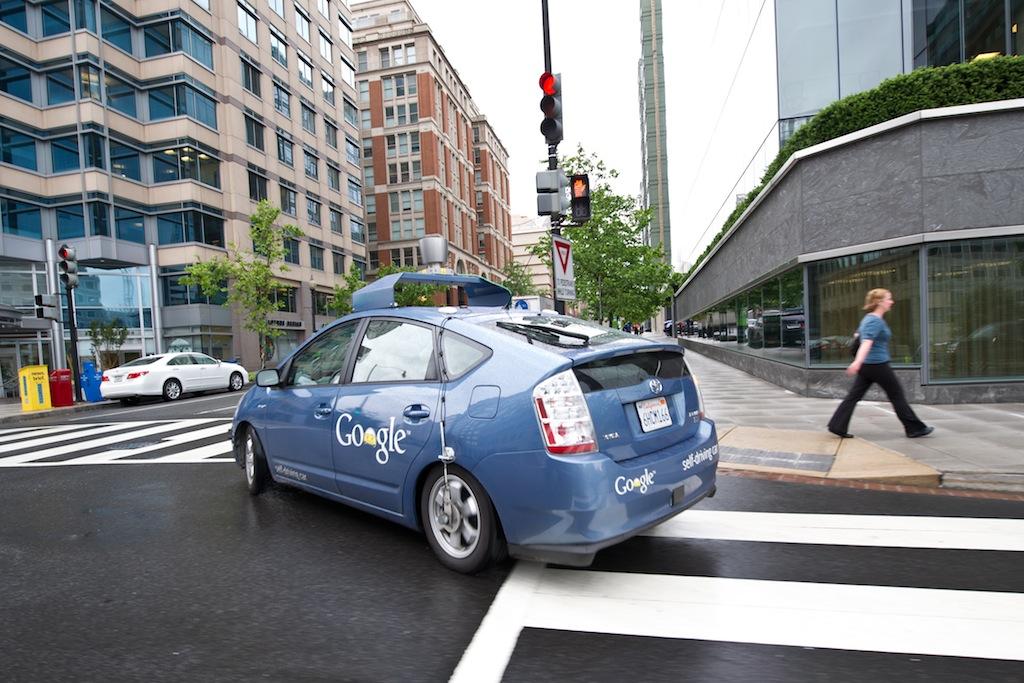Self-driving cars given the OK by California Gov.
The Google self-driving car maneuvers through the streets of in Washington, DC May 14, 2012. The system on a modified Toyota Prius combines information gathered from Google Street View with artificial intelligence software that combines input from video cameras inside the car, a LIDAR sensor on top of the vehicle, radar sensors on the front of the vehicle and a position sensor attached to one of the rear wheels that helps locate the car’s position on the map. Google expects that the increased accuracy of its automated driving system could help reduce the number of traffic-related injuries and deaths, while using energy and space on roadways more efficiently.
California Governor Jerry Brown cruised into Google headquarters Tuesday morning in a self-driving Toyota Prius and signed a law allowing self-driving cars on California's roads.
"Today we're looking at science fiction becoming tomorrow's reality — the self-driving car," Brown told AP. "Anyone who gets inside a car and finds out the car is driving will be a little skittish, but they'll get over it."
The bill, authored by State Sen. Alex Padilla, will regulate the safety and performance of self-driving cars and set regulations to test and operate the driver-less vehicles on state roads and highways.
The futuristic cars use radar, video cameras and lasers to navigate roads and stay safe in traffic without human assistance, reports the Los Angeles Times.
Google and Caltrans have been working on the project with other organizations. Google said the cars should eventually be safer than those driven by humans.
“These vehicles have the potential to avoid accidents.… We can save lives, create jobs and reduce congestion,” Google co-founder Sergey Brin told the LA Times.
“I expect that self-driving cars will be far safer than human driven cars.” Brin said self-driving cars could be functional and safe to use on public streets within five years or less.
The idea is that people could be productive during their morning commute like they do on public transit – checking up on emails, making calls or taking a nap.
CNN reports that Google has already been testing the cars in nearby Nevada, which passed a law last year authorizing driverless vehicles. Google told CNN that the autonomous cars have driven over 50,000 miles without any intervention from humans.
But you may have to hold off on sending your car out to run errands for you. Both Nevada and California require the cars have a human passenger to supervise.
The article you just read is free because dedicated readers and listeners like you chose to support our nonprofit newsroom. Our team works tirelessly to ensure you hear the latest in international, human-centered reporting every weekday. But our work would not be possible without you. We need your help.
Make a gift today to help us reach our $25,000 goal and keep The World going strong. Every gift will get us one step closer.
